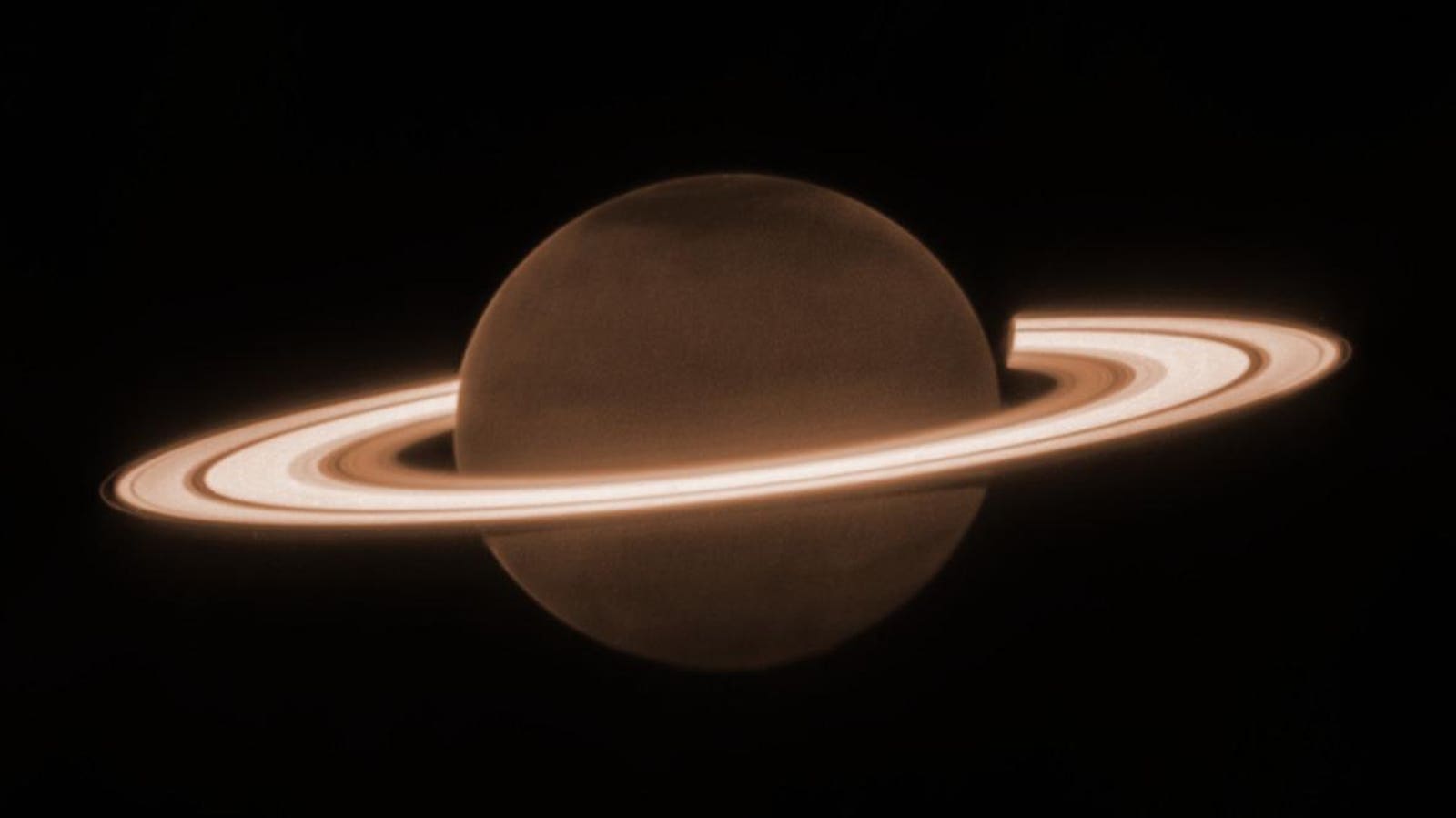Topline
If you’ve never looked at Saturn and its rings through a telescope, this weekend brings the perfect opportunity. On Sunday, Sept. 21, the sixth planet reaches its annual opposition, when Earth gets between it and the sun. It puts Saturn at its biggest, brightest and best in the night sky. It comes on the same day as a new moon, which causes a deep partial solar eclipse in the Southern Hemisphere.
On June 25, 2023, NASA’s James Webb Space Telescope turned to famed ringed world Saturn for its first near-infrared observations of the planet.
NASA, ESA, CSA, Matthew Tiscareno (SETI Institute), Matthew Hedman (University of Idaho), Maryame El Moutamid (Cornell University), Mark Showalter (SETI Institute), Leigh Fletcher (University of Leicester), Heidi Hammel (AURA)
Key Facts
A planet’s opposition occurs when Earth passes directly between the planet and the sun. That alignment puts Saturn closest to Earth and keeps it visible all night, rising in the east around sunset and setting in the west around sunrise.
At magnitude 0.6, Saturn will be shining brighter than at any other time this year, though it never gets as bright as either Venus or Jupiter.
To the naked eye, Saturn will be a steady, golden point of light that won’t twinkle, as stars do.
Even a small telescope will reveal its rings, though they are tilted almost edge-on in 2025, making them appear much narrower than usual.
A new moon this weekend will mean dark moonless night skies ideal for stargazing, if skies are clear, with the bonus of a major planet visible all night long. Venus and Jupiter will be visible a few hours before sunrise.
These Hubble Space Telescope images, captured from 1996 to 2000, show Saturn”s rings open up from just past edge-on to nearly fully open as it moves from autumn towards winter in its Northern Hemisphere, part of the course of its 29-year journey around the Sun. (Photo courtesy of NASA via Getty Images)
Getty Images
Why Saturn’s Rings Appear Closed
Earlier this year, Saturn’s rings appeared to vanish. It’a a line of sight phenomenon — Earth’s view of the planet waxes and wanes as Saturn orbits the sun every 29 years. Saturn’s 26.7-degree tilt means that the rings appear to open and close, as seen from Earth. The view is currently si-on, but from here they will widen and become brighter and more visible through 2032.
Saturn’s rings are temporary, but only in deep time. In about 100 million years, they’ll be pulled into Saturn by its gravity, according to NASA.
Saturn’s Opposition Concides With Solar Eclipse
On Monday, Sept. 22, with Saturn at opposition, a deep partial solar eclipse will occur. Caused by the new moon at 2:54 p.m. EDT, it will obscure up to 86% of the sun as see (only) from Antarctica, New Zealand and the western South Pacific islands. It will be underway at sunrise, causing dramatic views if skies are clear.








